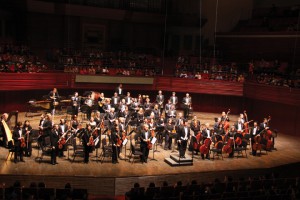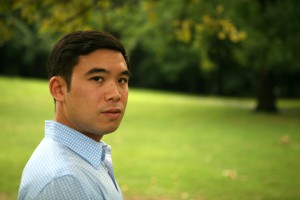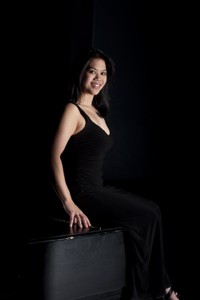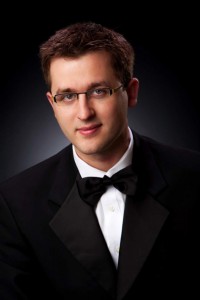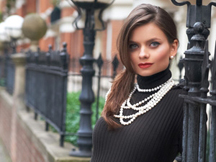In a program entitled “Dialogue Between the Traditional and the Modern”, the Chinese Hua Xia Chamber Ensemble presented a program of Ancient and Modern Chinese music, pairing traditional Chinese instruments with “Western” instruments in commissioned works. Featuring six (!) World Premieres, it was a concert that bridged the musical heritages of the East and the West.
The Chinese Hua Xia Chamber Ensemble was founded in 1995. The members are mostly award-winning, young conservatory teachers who are considered the “best of the best” in China. The ensemble requires members not only to master traditional folk music, but to explore and seek innovations in modern styles as well. Conducted by Tsung Yeh, they have recorded several albums and have performed throughout the world.
Wanting a closer look at the various Chinese instruments, such as the zheng, the ruan, and the yangqin, among others, and to observe the players “up close” made me abandon my usual strategy of sitting in the back rows. It was fascinating to see these wonderful instruments being played with such mastery.
Six members of the ensemble opened the concert with traditional Chaozhou music entitled “Lang Tao Sha”. In this arrangement, the erxian, zheng, pipa, flute, yangqin, and the ruan were used. The playing and balance among the six players was outstanding; the six instruments sounded as one. Following this piece was the first premiere of the evening, “Feng Qiu Huang” (a male phoenix sparks a female phoenix). Written by Liu Qing for cello, Chinese percussion, and the guqin (a small, seven-string zither-like instrument, played by plucking the strings), it uses an ancient Hainan love song that depicts the story of a male phoenix (“Feng”) courting a female phoenix (“Huang”). Beginning with quiet low tones in the cello, followed by responses from the guqin, it built in intensity until it reached a climax, then released the tension and came to a quiet conclusion. There were moments where it was difficult to hear the guqin, but this did not spoil the net effect. The second premiere, “Five Impressions” by composer Gao Ping, was given in partial form (stated in the program as “Part of Movements”). The conductor Tsung Yeh showed admirable concentration and restraint even before the first note by patiently waiting for the incessant picture taking to cease. Once these distractions passed, an inspired performance took place. With haunting flute lines paired with the cello, then pipa with marimba, then all players joining together, each “Impression” had reminders of one previously played. Culminating in rapid passagework that had me thinking of Prokofiev, this imaginative piece was brought to a crackling close. After this excitement, it was a good choice to pull back to an ancient work called “Wild Geese in the Sandbank”. Played on the xiao, a vertical end-blown flute that is roughly the size of the western Alto flute, this work has a pastoral quality, both in the beautiful lento and the joyful allegro sections. Zheng Weiliang gave an enchanting performance and was rewarded with thunderous applause from the audience; he returned to the stage for a well-deserved second bow. Ending the first half was the third premiere, “Graceful”, from composer Wang Danhong. Described as the emotional journey to Dunhuang Caves, and the graceful dancing of flying fairies, the work mesmerized this listener from start to finish. The erhu melody had Ravel-like moments, the flute playing was increasingly virtuosic, and the work continued to gather momentum to a fever pitch. Finally, there was an unforeseen twist – what seemed to be a final explosion of energy was a false ending. Indeed, conductor Tsung Yeh turned to the audience with a quick wave and smile that said “Don’t clap just yet! We’re not done!” Winding it down to a conclusion, he finished with clasped hands and a bowed head, and then turned to the audience. I found this amazing work to be the highlight of the concert, and I would like to hear it again and again!
After intermission, the first work by a Western composer and the fourth premiere, “Nodes”, by John Mallia was presented. In his notes, Mr. Mallia states, ”‘Nodes’ is composed from several discrete strains of material that are alternately exposed and hidden as thresholds positioned throughout the formal structure are crossed.” Combining violin, cello, bass clarinet, and percussion with the zheng, pipa, flute, and erhu, this interesting piece was played skillfully and showed expert blending of Western and Chinese instruments. As Mr. Yeh said in his charming remarks, “open your mind and let the music fill you”. After the piece was finished, zheng player Qui Ji discreetly pulled out a tuning wrench to re-tune the zheng, which she did very quickly, no doubt to bring it back to traditional Chinese tempering. The last traditional Chinese work, from Peking Opera, was “Dark Night”. Mr. Yeh told the audience the story behind the piece, which I suspect a majority already knew, to judge by the roar of approval. The story is of a great warrior King’s wife saying good-bye to him on the eve of a great battle from which they both know he will not return. It was played with deep reverence, capturing the martial qualities with vigor. The audience was clearly delighted and expressed their approval with the loudest and longest ovation of the evening; this piece was clearly the audience favorite. Chai Shuai, playing Beijing erhu (a smaller version of the standard erhu), was called back on-stage by the audience for his incredible performance. The fifth premiere, “Less, but More” was next on the program, composed by recent Cincinnati Conservatory graduate Xie Wenhui. Ms. Xie writes in her notes that “the inspiration of this piece is taken from the concept of Wang Wei’s works, who is a well-known Chinese poet in Tang Dynasty (8th century). He affirms the world’s beauty, while questioning its ultimate reality in his works. In this piece, I want to draw a comparison between the deceptive simplicity and the Zen path to enlightenment, which is built on careful preparation but is achieved without conscious effort”. The program omitted the mention of the clarinet, pipa, and zheng. The work was given a thoughtful performance by the talented players, making what was quite complex seem simple. The final work (and premiere) was the ingenious “Bridges”. Composer Victoria Bond has written a work with a double meaning; inspired by bridges in both the United States and China, and the concept of ‘”bridging” Western and Eastern influences. It included a train-like rhythm (“Railroad Trestle Bridge in Galax, Virginia”), a traditional Chinese song “Moli Hua” (Jasmine Flower), shades of Joan Baez, and finally, George Gershwin (in the “Brooklyn Bridge”). I suspect this work is as fun to play as it was to hear, and the ensemble really took to the spirit in all the various tributes. East joined West in a jubilant finale and brought the evening to a close with a bang.
Some final thoughts on this most enjoyable evening- The Chinese Hua Xua Ensemble is a first-rate group and their conductor Tsung Yeh is a charismatic leader. It is truly a privilege to see and hear musicians who are all about the music, who play with such passion and such skill, and are keeping the thousands-year old traditions alive. Bravo!

